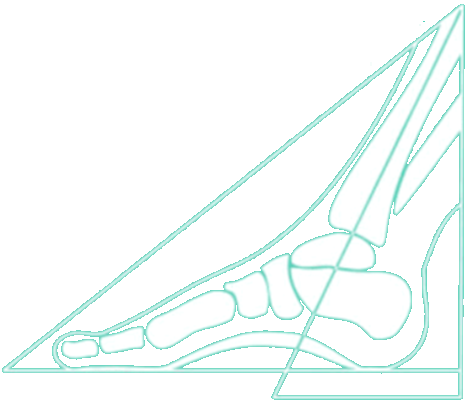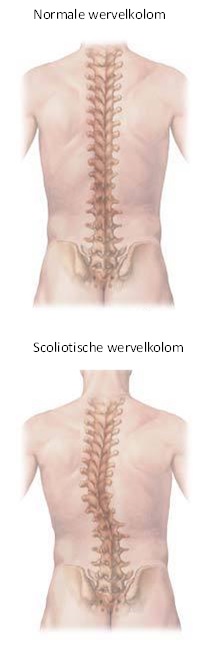
The spine consists of 24 vertebrae. Below the last lumbar vertebra is the sacrum. The spine has an S-shape. Curvatures occur in the thoracic and sacral sections with the convex side to the back- this is called a ‘kyphosis’. Curvatures occur in the lumbar and cervical sections, with the convex side to the front- this is called a ‘lordosis’. The normal and natural curvatures in the back ensure that the weight of the upper body can be carried by the vertebrae and shocks can be absorbed. Some people have a lateral curvature in their spine- this is called a ‘scoliosis’.
A scoliosis is a sideways curve in the spine. Scoliosis can occur as a congenital defect, but scoliosis occurs as ‘compensation’ for a leg length difference between the two legs. If the scoliosis is accompanied by kyphosis, a hunchback develops. In girls, we see scoliosis more often than in boys.
As you have read above, a leg length difference is a possible cause for the development of scoliosis. A leg length difference can be congenital or occur after hip or knee surgery. However, leg length difference can also occur during the growth phase in children. This is when one leg grows more than the other. This usually recovers in the next growth phase. Finally, at the end of growth, everything is equal and straight again. Deviating foot positions or bone structures (unilateral x- or o-leg) can also cause a leg length difference. For example, if one foot is flatter or sinks more inward than the other, this will cause a difference in length when standing and walking, causing the pelvis to become crooked and may also result in scoliosis.
A practitioner can determine in an examination whether your abnormal position(s) in your back stem from an incorrect or abnormal foot/leg position or walking pattern. The practitioner can use therapeutic insoles to correct your foot position and, if necessary, compensate for the leg length difference.
